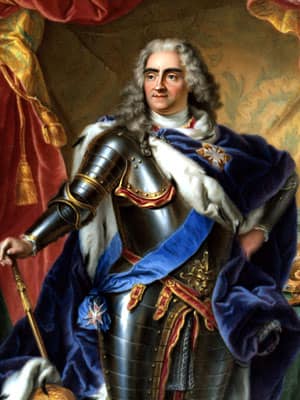After the Swedish king Charles XII conquered Denmark in 1702 and won a victory at Narva, he directed his army to Poland. Having captured Warsaw and Krakow, she forced the Polish king Augustus II to retreat for a long time. Then, in 1702, the troops of the Swedish general V. Stenbock occupied Sokal, imposed a contribution on it and looted a lot. But they found the biggest booty in the monastery of the Bernardine monks and the church, where riches flowed in a generous river for many years. In addition, the noblest nobility of the Belz Voivodeship hid their own jewels here for safe keeping [1] .
The Swedes then dug their camp in Sokal with large trenches, the traces of which could be seen here until the end of the last century. The city and neighboring villages were deserted. During the approach of the Swedes, their inhabitants hastily took all their property, cows, horses and other animals and went to live in the forests, where places were safe and inaccessible to war robbers.
In 1704, the de-crowned Polish king Augustus II appeared near Sokal with his ragged wagon and frightened retinue. Here he hides from the persecution of Charles XII. He is rescued from Swedish captivity by the troops sent by the Moscow Tsar Peter I. Eleven infantry regiments under the command of Mykhailo Golitsyn and five Ukrainian cavalry regiments led by the commanding hetman Danylo Apostol arrive in Sokal to help Augustus II.
After the end of the Northern War, Sokal again develops slowly. The transitions of armies, contributions, and the frequent location of troops here led the townspeople to poverty. In 1725, the Sokal Starostvo was forced to issue a decree granting them a delay in paying taxes.
In the second half of the 17th century, printing began to develop in Sokal. It was started by two printers who, for unknown reasons, were expelled from Tartakov in 1751.
The last Sokal elder, appointed by the will of the king, was K. Poniatovsky. In 1768, he gave up his place to Francisk Salesius Potocki, one of the richest tycoons in Poland. At that time, S. Pototsky was called a little king in Russia, and the city of Krystynopil (Chervonohrad) was its capital. This tycoon had a castle with a large military guard in Khrystynopol, as well as palaces in Sokal and Tartakov. His possessions have greatly increased since the death of the Latin bishop I. Lashch. This rich hierarch was childless, and all estates and treasures were inherited by his sister Anna Pototsky, who was the wife of Salesius Pototsky.
In 1768, the so-called bar confederation arose in Podillya, a Polish-noble association directed against Russia. But the confederates showed the greatest hatred against Ukrainians and Jews. On May 15, 1769, under the command of Pulavskyi, they appeared in Sokalshina. On the same day, they spent the night in the village. Villagers imposed a contribution on Krystynopil. After receiving it, they went to Sokal, and then to Grubeshev [2] . The detachment, led by the confederate Kanyovskyi, stopped in Krystynopol. Another group of this nobility was on the right bank of the Western Bug, and some confederates entered the castle of S. Pototsky, where they were hospitably received by its owner and entertained.
On May 28, Drevich’s Russian military unit unexpectedly arrived in Krystynopil and ran into Polish confederates. The battle began. 123 Confederates died in it. Others fled to Sokal, some hid in the Bernardine church, but the Russians found them there, imprisoned them, and later released them.
Before the start of this battle, the number of Poles was smaller. However, many Russians also died in it. Some were buried in the suburbs of Kristinopol, others by the road leading to the village. Islands (near the forest) where the cross was placed, others — in the village. Dobrachyna and Boratina. Among those killed were Ukrainians who served in the Russian army.
During this armed fight in Krystynopil, the old woman Tereza Vishnevska died of fear. She was buried quietly, without bells, together with noble confederates in the tomb of the local Bernardine monastery [3] .
In October 1770, a plague appeared in Sokal and surrounding villages. The only escape from it was to escape into the forests and thickets, where people dug themselves deep holes and hid in them. The means of combating this scourge were, as they were then called, “spiritual” and “physical.” The clergy were reduced to conducting church processions and painting crosses on the doors of buildings… The physical means were to burn fires in the streets all the time so that the smoke would purify the air, burn incense with potions called “bad” and juniper, rub themselves with garlic and consume a lot of it , carried silver with them, fumigated themselves with vinegar poured on hot iron. It did not help much, because they were afraid to bury the dead, and animals and birds spread this scourge from them further. Then 357 residents died in Sokal.
At the end of his rule in Prybuzhha, the Sokal headman Saleziy Pototsky and the Polish nobility committed a crime that gained great international publicity at the time. S. Potocki, who once aspired to the royal throne, did not like it very much that his son Stanislav, having fallen in love with a poor but well-educated woman

